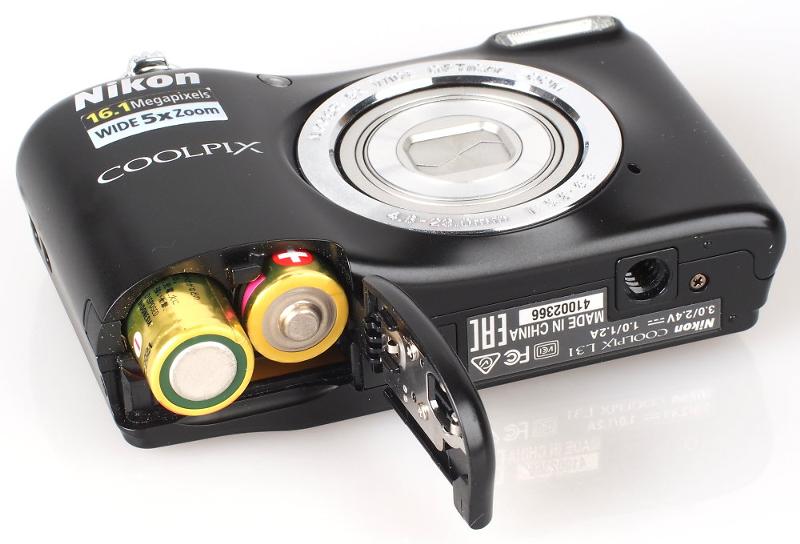Each amateur photographer is completely out of time, often in the midst of an exciting shoot, he was faced with the problem of dead batteries. How many worthwhile shots have been lost forever and how many times have creative inspiration suffered? It is necessary once and for all to put an end to this and thoroughly understand which batteries are best for the camera. Get the right ones and enjoy indulging in your favorite pastime, no longer experiencing problems from poor-quality work of power sources.

Content
The main types of batteries
The indisputable advantage of using AA and AAA batteries in the cameras as a battery is the availability and relative cheapness of the products. It is very convenient to buy and have the right amount of batteries in stock, replacing the shrunken ones right during shooting. A negative point is the small capacity of the battery and the abundance of low-quality products that sit down after several tens of shots.
The main types of batteries:
- Salt batteries famous for their low price. Weak batteries, quickly losing voltage during operation. They have a short shelf life. At low temperatures, they completely lose their charge. Suitable for devices that do not create long-term loads that do not require strong pulses. In modern cameras, use is not recommended.
- Alkaline batteries are by far the most common batteries on the market. They have an average power reserve. An import manufacturer labels products with the Alkaline label. They have a shelf life of about 5 years. Coping with intense load, they have the widest application.
- Lithium batteries, fairly expensive and efficient batteries. Able to cope with long-term loads. They have an average shelf life of 7 years.
The Russian market is saturated with batteries of well-known manufacturers, offering the consumer a large selection. The best option for use in the camera is to use alkaline batteries marked with the Alkaline inscription.
How to choose an energy source suitable for a particular brand?
In the operating instructions, manufacturers of well-known brands of cameras Canon, Nikon, Samsung, Olympus, Fujifilm, Sony clearly prescribe the required parameters and the type of used batteries. It is necessary to purchase new batteries for the camera, strictly following the specified requirements.
The rivalry of batteries and rechargeable finger batteries
A modern camera consumes quite a lot of energy. The use of even the best batteries does not guarantee the smooth operation of the camera. After filming several hundred frames, you have to buy a new set, spending on them the next cash. The endless process can be interrupted by purchasing a high-quality, rechargeable set of batteries once. You can recharge and use them several hundred times.
Manufacturers also support their use, recommending the use of batteries in the manuals as the source of energy, using alkaline batteries in rare and exceptional cases. Today, a large number of these products are produced, and you need to know some nuances in order not to be mistaken and choose a win-win option for a digital camera.
The main criteria for choosing batteries:
- quality product from a trusted manufacturer;
- large capacity, ranging from 1200 to 3200 mAh;
- good current transfer, which contributes to the full return of the capacity to the power of the camera;
- large residual shelf life;
- low self-discharge.
To charge the batteries, you also need to purchase a quality charger.Many manufacturers, simplifying the choice for consumers, offer kits that include finger batteries along with chargers. Also on sale are more powerful and roomy adapters.
Which batteries are best for the camera
There are several types of finger batteries that differ in the chemical composition of the working fluid, cathode and anode material. Nickel-cadmium and lithium-ion are well-proven power sources, are used little as finger batteries and are of high cost. The main market niche, perfectly coping with its task, is occupied by nickel-metal hydride power sources.
Nickel-metal hydride (NiMh) batteries with high specific energy have long and firmly taken their place in newfangled gadgets. The ability to recharge power supplies is emphasized by the inscription Rechargeable on the product body. It also indicates the battery capacity, measured in milliampere-hours (mAh). No need to try to take power supplies with the largest capacity. As practice shows, such products have an increased tendency to self-discharge.
The best choice for a rechargeable power source is to purchase low self-discharge (NiMh) batteries. Such products are labeled with the inscription LD-NiMh. They should be chosen for the long and reliable operation of the camera.